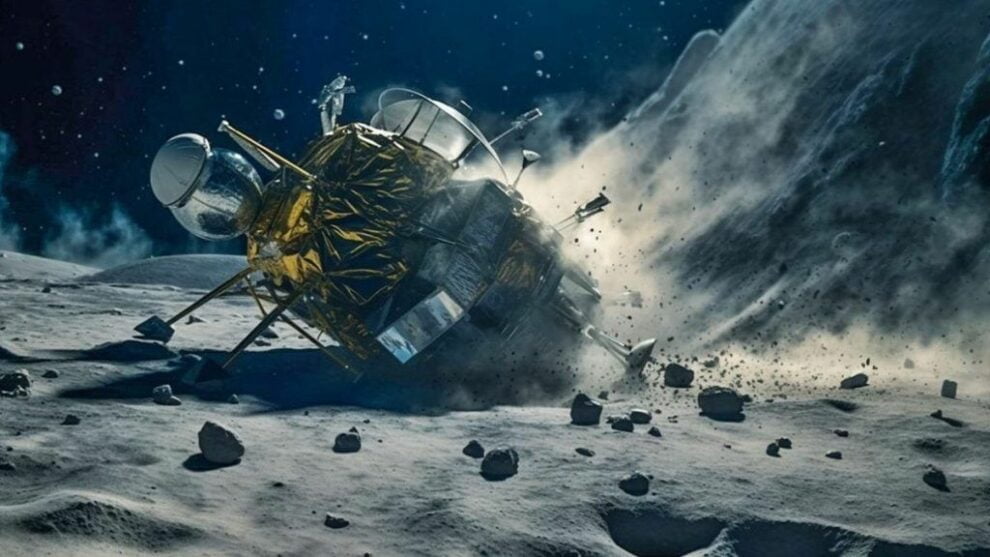On the humid afternoon of November 14, 2008, Yuvraj Singh, the Indian cricketer, was roaring on the pitch as he decimated the English pace attack in Rajkot. With his fierce knock of 138 of just 78 balls, India defeated England by 158 runs and the country erupted in celebrations, but, just over 1600 kilometers away in Bengaluru, the mood was tense.
Unbeknownst to the Indian fans, cheering for Yuvi across the country, the Indian Space Research Organisation (Isro) was about to make a big bang.
The space agency was going to crash a spacecraft intentionally — on the Moon.
India launched the Chandrayaan mission on October 22, 2008, as it announced to the world its capabilities of sending missions outside Earth’s orbit, on another celestial body. Till then, just four other countries had managed to send a mission to the lunar world – the US, Russia, Europe, and Japan. India became the fifth.
While Chandrayaan was a technology demonstration mission, what it did around the Moon is known to the world. Yes, it found water on the surface of the Moon and registered its name in history books. But, there was more to this mission than meets the eye.
Hidden inside the spacecraft, was a 32-kilogram probe, whose sole purpose was to crash. They called it the Moon Impact Probe.
Back to the night of November 17, 2008. Sometime around 8:06 pm, the engineers sitting in the mission control of Isro keyed the commands that jettisoned the Moon Impact Probe. The silent world of the Moon was about to feel the bang.
From an altitude of 100 kilometers above the lunar surface, the impact probe commenced its final journey.
As the probe began to step away from the Chandrayaan orbiter, its onboard spin-up rockets came to life and began guiding its plunge to the Moon. These engines roared, not to speed it up, but to slow it down, and re-orient it for a pitch-perfect crash. As the spacecraft travelled through the airless world of the Moon, it started seeing what lay below – a bruised, battered world that was about to have one more crater on its face.
Hurtling towards the lunar surface, the shoe-box-sized probe was not just a scrap of metal, but an intricately designed machine to carry three instruments inside it. A video imaging system, a radar altimeter, and a mass spectrometer so that they could tell Isro what they were about to find.
While the video imaging system was designed to take photographs and transmit them back to Bengaluru, the radar altimeter was integrated into the probe to track the descent rate as it approached the lunar surface. The mass spectrometer, on the other hand, served the purpose of analysing the exceedingly sparse lunar atmosphere.
As the surface began to come up, the instruments packed inside began transmitting data to the orbiter overhead, which was recorded in its readout memory to be later sent to India for deeper analysis.
Nearly 25 minutes after it jettisoned from Chandrayaan, the Moon Impact Probe met its fate – a hard landing on the surface of the Moon. The mission was accomplished in the same way as Yuvraj achieved the other one for India — it was clinical.
Isro made history by crashing a spacecraft on another world that had remained an enigma to the human species since time immemorial.
But what did it achieve? The data from these three instruments would potentially go on lay the foundation of the Chandrayaan-2 in 2019 and the Chandrayaan-3 mission as it approaches a historic soft landing on the Moon on August 23.
The information relayed by the impact probe unraveled the world of the Moon like never before. After all, it was the first to detect signatures of water on the surface during its nearly 25-minute-long plunge. The findings were later confirmed by Nasa’s Moon Mineralogy Mapper, revealing to the world that Luna was not bone-dry as earlier thought.
But, what made Isro even more proud was the fact that the cuboid-shaped probe bore the Tricolour on its body. As it became one with the Moon on the night of November 14, 2008, the Tiranga was planted on the Moon forever.
Source : India Today









